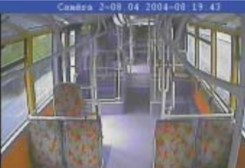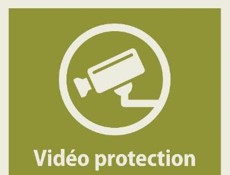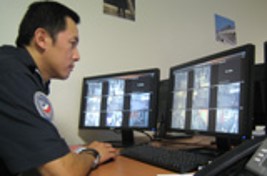The feeling of insecurity in public transport is a major problem. Solutions are regularly put in place to improve the protection of bus users in which malicious acts are as frequent as elsewhere.
Several solutions are worth noting in terms of bus network safety:
• Mobile CCTV cameras in the buses which continuously film the driving position and the passenger area. Regulations must be put in place to manage the recordings: images destroyed after 8 hours for example; those concerned by a distress call from the operator are kept for 72 hours. The bus service duty team or the command post locate the bus using radiolocation systems and communicate by radio. Please note that the cameras do not currently send any images to the screen and are not visible to users. In the absence of any complaint, investigation or express request from the police, most of the recordings are not used. In particularly sensitive areas, “smart” surveillance cameras can be used to detect suspicious behaviour. If any unusual behaviour is detected, security officers are alerted. The recorded images are centralised on a CCTV control console. A CCTV surveillance officer uses the system to monitor the bus shelters and the interior of the vehicle in real time and detects suspicious behaviour or gatherings, criminal activity or gatherings of gangs. If they witness any unusual activity, they will give directions to the patrols that are in the field. Thanks to their virtual role, they also protect the patrols responding in the field and can, if necessary, call for reinforcements should a crowd turn into a mob, or if a riot erupts following a verification or a difficult arrest.



- Request stops from inside bus. This system allows women in particular to avoid having to make long journeys back home at night.
- Emergency call buttons in the bus which can be used to contact the driver in the cabin or a network order agent.
The cameras, which have been installed in public places over the last decade, have also become more and more sophisticated, largely because of the transition from analogue to digital, which has improved the quality of the images collected, their number and their storage capacities. What’s more, for the first time thanks to the transition to digital, it is possible to analyse the video data in order to automate the surveillance and set up alarms. All of these analyses, generally known as intelligent video, can be used to overcome the ongoing lack of available staff to view the video surveillance images, as well as the concentration capacity of these officers, who can only monitor a limited number of screens for a few hours at a time. The intelligent video aims to facilitate the task of these officers by giving them an aid to analysing the images so that their work would ultimately be limited to simply confirming alerts, which would be triggered automatically.
Consequently, video surveillance could not be effective without an auto-intelligent system for sorting and filtering the images to be analysed on a large scale given the data collected.
Moreover, all of these video surveillance tools must be used with the help of analysis procedures to be put in place in consultation with the police.